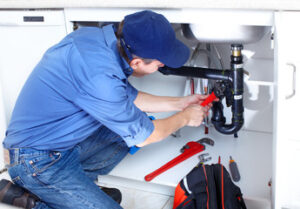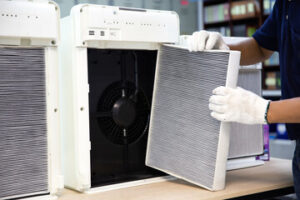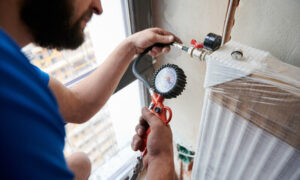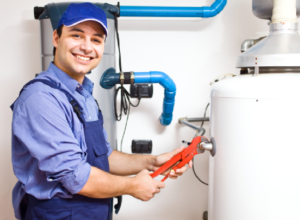Buckhead Plumbing is the system that brings water into a building and provides safe drainage for water and waste as it exits. It is a complex network of pipes that must adhere to strict regulations and industry standards.

To create a plumbing plan diagram, determine the building occupancy and fixture requirements first. This information will help you choose the water flow rates for proper pipe sizing.
Piping systems come in many forms and serve a number of purposes. The function of each system must be carefully analyzed to understand its overall purpose and ensure compliance with relevant codes, standards, and regulations. Often, different piping systems are used in industrial facilities and are used for specific manufacturing processes. It’s important to differentiate between plumbing and process piping because they have very different functions and adhere to different codes.
What makes plumbing and process piping so distinct is the purpose for which each system was designed and constructed. Essentially, plumbing is responsible for transporting water and wastewater within a building or structure. It includes the installation, maintenance, and repair of pipes, as well as the design and layout of the plumbing networks.
On the other hand, process piping is responsible for transporting chemicals, gases, and water in support of an internal manufacturing or processing operation. It is used in industries like petroleum refineries, paper plants, chemical plants, textile plants, semiconductor plants and cryogenic plant industries. The most effective way to distinguish between the two is by looking at what the piping systems are transporting and where they are located.
In general, a piping system is a collection of tubes, pipes, pressure hoses, valves, separators, fittings, gaskets and strainers that are all connected together. They can be constructed from a wide variety of materials, including stainless steel, copper, plastic and other polymers. They can be built to be either rigid or flexible, depending on the requirements of the application.
The difference between plumbing and process piping is the fact that while plumbing focuses on moving water in order to provide sanitation for human use, process piping handles chemicals and other non-water fluids to convert raw materials into a tangible product. As a result, these types of pipes must be designed and constructed to handle a wider range of conditions and materials. In addition, they must comply with more rigorous industry standards than plumbing systems. This is especially true when comparing them to power piping systems, which are designed to distribute high-temperature steam and compressed air.
Plumbing and drainage are two important aspects of any home or building. They are used to carry water, waste, and air throughout the structure. Plumbing involves the installation, repair, and maintenance of these systems. It also includes the design and layout of pipe networks. In addition, plumbing deals with the distribution of water to various appliances and fixtures. This system is vital to ensuring that your house has a constant supply of clean water and a safe waste disposal system.
While most people think that plumbing and drainage are the same, they are actually two separate things. Plumbing covers everything that relates to bringing water into the house, such as taps and showers. This also includes toilets and water heaters. Plumbing problems include leaky pipes, low water pressure, and clogged drains. However, there are some steps you can take to fix these issues yourself without calling a professional.
On the other hand, drainage focuses on removing water and waste from the house. This includes the drains, sewer lines, and septic tank. It also includes the venting system, which carries air to prevent siphonage and back pressure. In most cases, the ventilation system is connected to the drains via a piping network.
A faulty plumbing or drainage system can be a serious health hazard and should be repaired as soon as possible. The good news is that these issues are usually quite easy to fix. There are many different products on the market that can be used to break up blockages and remove debris from a drain or sewer line. However, if these methods do not work, it is best to call in a plumber.
Both plumbing and drainage are essential for your home, but they are two distinct operations. When choosing a plumber, make sure they are licensed and insured to work on your plumbing or drainage system. This will ensure that your home is in compliance with local and national regulations. It will also help reduce the risk of costly damages and repairs in the future. In addition, it is important to choose a plumber with experience working on both residential and commercial plumbing systems.
Plumbing involves piping that conveys fluids, typically water, for a variety of applications. Its most common uses include delivering potable water, heating and cooling, and waste removal. It is closely related to sewage systems, which transport wastewater to septic tanks or local sewer systems. Plumbing is a trade that requires extensive knowledge of engineering, science, and mathematics to design and build. Plumbers are also expected to adhere to strict safety and health standards.
Most modern plumbing systems use copper, steel, or PVC (polyvinyl chloride) pipes. They are designed to be durable and long-lasting, and to resist corrosion and rust. They are also insulated to conserve energy. Plumbing systems can be very complex, and it is important to have a qualified professional manage their installation and maintenance.
The plumbing industry is one of the fastest-growing trades in the country. The demand for skilled laborers has increased significantly in recent years, and wages have risen. However, plumbing is a highly competitive field and demand fluctuates depending on the state of the economy.
Most states require plumbers to be licensed. Licensing requirements vary, but usually involve a combination of education and experience. Many plumbers obtain their skills through on-the-job training or a vocational school program. Others pursue a four-year college degree. In addition to licensing, plumbers must also follow building codes and regulations. This includes securing permits, inspections, and adherence to environmental considerations. These requirements ensure uncontaminated drinking water and prevent the spread of disease. Plumbing is a vital service that contributes to public health and overall quality of life.
Whether you’re looking to install a new kitchen or bathroom, or just make some repairs, a plumbing professional can help. Plumbing is the network of pipes that conveys water and other liquids throughout a building or structure. It consists of fixtures and valves that serve multiple functions, including heating and cooling (HVAC), waste removal, and potable water delivery.
The plumbing industry is highly regulated to ensure the safety of drinking water and proper wastewater treatment. Plumbers must be licensed and adhere to strict regulations to perform installations, maintenance, and repair services. They also must have a good understanding of the layout and design of plumbing networks to ensure safe, efficient operation.
In addition to ensuring that water flows properly through a building, plumbing also helps protect the environment by preventing contamination and pollution. As a result, it’s important to keep up with regular maintenance and repairs to avoid costly repairs in the future.
There are many different types of plumbing systems, but most consist of copper, PVC, or PEX pipes that transport water to and from fixtures. These pipes are usually coated with a plastic or metal to prevent corrosion and to increase their strength and durability. Plumbing also involves the installation and maintenance of tanks, valves, and faucets. Some common fixtures include toilets, water closets, urinals, bidets, bathtubs, showers, and utility sinks.
Water is essential to our lives and plays a vital role in our health and well-being. It keeps us hydrated, flushes out toxins, and maintains body temperature. But if your plumbing system is not working properly, it can cause serious damage. In order to avoid this, it is important to understand the basics of plumbing and how it works.
While you may not think about your plumbing system often, it is an important part of your home or office. Without a properly functioning plumbing system, you could experience numerous problems, from leaks to sewage backups. This is why it is important to hire a plumber for routine maintenance and emergency repairs. A qualified plumber will be able to identify and fix any issues before they become major problems.








